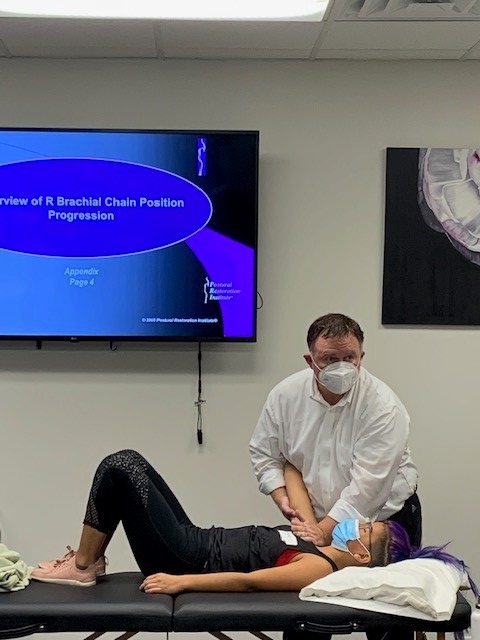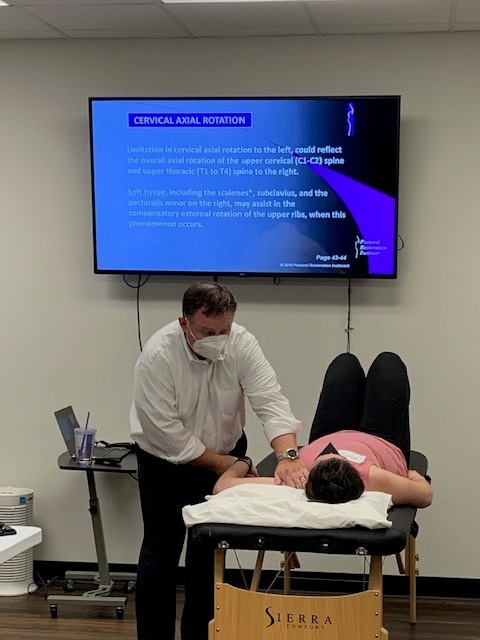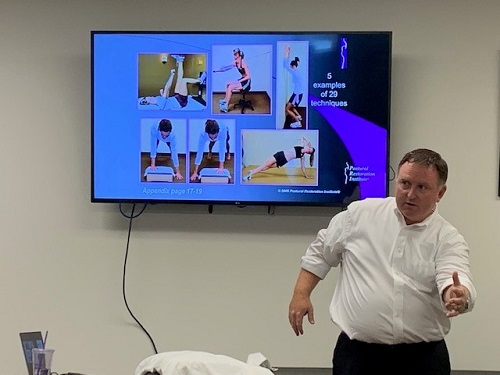A few days before I was to present Postural Restoration, I reflected back to the number of times I had taken this course during my 17 year journey in PRI. We were fortunate to have nine movement specialists taking their first PRI course, and with the exception of two attendees, no one else attending the course had attended Postural Respiration previously. Since it was almost everyone’s first voyage into this course material, I wanted to really focus on two topics that had escaped me in my previous attendance of this course: what/why/how surrounding Superior T4 Syndrome, and why do the R low trap/tricep and L serratus anterior/low trap hold such high significance in PRI for management of the BC pattern.


We had lively discussion surrounding human asymmetry and how that asymmetry feeds into patterned respiratory mechanics, as well as the potential detriments of patterned breathing. Once we had the foundational concepts secured, we could move into the prevalence of the R BC pattern and what tests we could use to determine if the R BC pattern was overactive. Using the algorithm found on page 48, we were able to walk through manual and non-manual treatments, as well as spend a lot of time defining why and how Superior T4 Syndrome presents itself, and how to uncover the presence of Superior T4 Syndrome as a pathological, or "phony", respiration strategy.
Algorithms are used frequently in PRI as a means to learn and improve ones ability to apply PRI concepts, particularly if the learner is new to PRI and the science behind it. Again, using page 48 as a backdrop, we were able to progress through why the R low trap/triceps is a necessary piece of R BC inhibition, but also why the L serratus anterior/low trap are necessary for security after proper management of Superior T4 Syndrome. We were also able to spend time in lab going through several of the non-manual techniques that support the manual techniques presented in this course. Since inhibition is such a huge part of PRI, we were able to focus on several non-manual inhibition techniques surrounding those individual who present with B PEC or B BC findings.

Being able to present this course in the clinic I work in with fellow PRC, Donna Parise-Byrne, was great. It was also rewarding to have fellow PRC, Jill Maida, in attendance as well. My thanks to Gail Trubow, Brock Mitchell, Anne Farkas, and Heather Pappas for their help during labs and asking great questions. We really had many great questions and dialogues over the course of the weekend. Thank you to all who attended the course as we took every precaution possible to ensure everyone felt safe, while still receiving the course content at a level that each individual needed.


